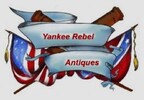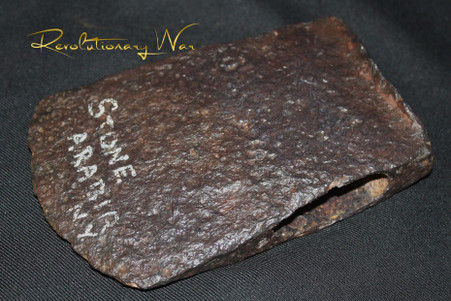 Loading... Please wait...
Loading... Please wait...-
Call us on (973) 810-2976
- My Account
- Gift Certificates
- Items / $0.00
All prices are in All prices are in USD
Categories
- Home
- Sold, Hold, Layaway items
- Large Revolutionary War Axe Head., recovered at Battle of Stone Arabia (Nellis), NY (SOLD)
Large Revolutionary War Axe Head., recovered at Battle of Stone Arabia (Nellis), NY (SOLD)
Out of Stock
Product Description
This is another piece out of a 60-year collection of Revolutionary War/French and Indian War artifacts. It is a Revolutionary War axe head, measuring 7” x 4” x 1” and weighs 3 pounds, 15 ounces. It was recovered many years ago in the Mohawk Valley, NY area.
This type of axe with a wide blade is a style that became quite popular and American made during the middle of the 18th century, although many similar styles were manufactured in England. With all of the fort building and clearing land, there was a dramatic shortage of tools on both sides. Similar axe heads are in the “Collector’s Illustrated Encyclopedia of the American Revolution”, by Neumann and Kravic (see pictures). Another is on display at the Fort Ticonderoga Museum (see pictures). In “Soldiers of the American Revolution”, by Don Troiani there is one shown (see pictures).
On October 19, 1780, Sir John Johnson led an army of 900 Loyalist and British Regulars on an invasion of the Mohawk Valley. After following a circuitous route across southern New York State, they swept north up the Schoharie Valley entering the Mohawk Valley at Fort Hunter where the army turned west towards the Canajoharie/Palatine Districts.
The invaders camped the evening of October 18th near the Noses, a geological feature which forms the great divide in the Appalachian Mountain chain. The following day they crossed the Mohawk River at Keator’s Rift and burned Jellis Fonda’s mill before continuing on to attack the settlement of Stone Arabia. This was called the Battle of Nellis Flatts or the Battle of Stone Arabia.
Colonel John Brown of Massachusetts’s Militia marched his 380 militiamen out of Fort Paris to meet the enemy on a field about a mile from the fort. Outnumbered nearly 3 to 1 he was shot from his horse and his men fled the field. Stone Arabia was completely destroyed by the enemy. The raiders slipped away under the cover of darkness and returned to Canada.
The axe remains in very nice condition, having some overall roughness, but no chipping or flaking. This collection began in the late 1950s and was created by private acquisitions, closed museums, and from lake divers. The collector meticulously displayed and cataloged every piece along with its provenance. His markings were crude at the time, but now they have proved to be very important. Many of the pieces went through electrolysis to remove crusted rust.
This is the first time this artifact has been on the open market, and it is truly a great piece of early American History. It definitely merits a place in an advanced collection or museum. Very few artifacts were found in this area. As with all the pieces in this esteemed collection, a Certificate of Authenticity will be included.



